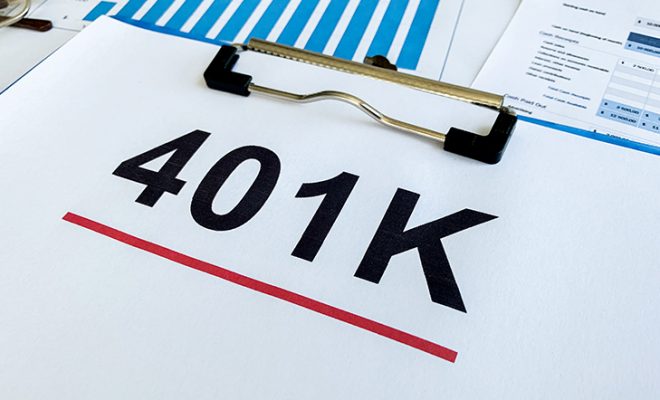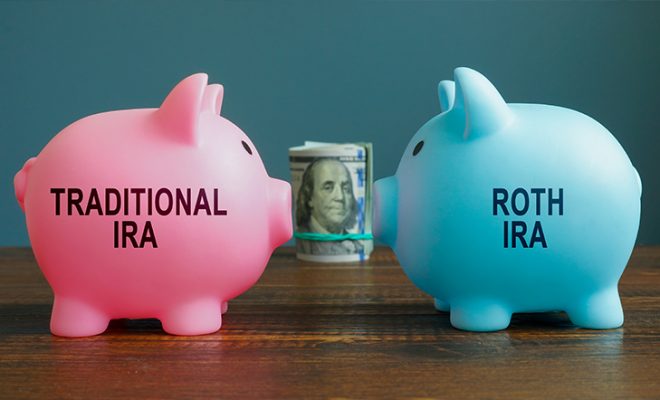Why Reviewing Your 401(k) Fees Should Be on Your To-Do List

Most people focus on market gains and losses in investing, and rightly so. These fluctuations play a big role in determining how well your 401(k) investments perform. But it is important to understand that those headline gains are not your real gains. Before you can take your returns home, you will encounter several deductions along the way.
Here’s what normally eats into your investment returns:
- Taxes
- Inflation
- Investment fees
While taxes and inflation are broader economic forces and often harder to control, 401(k) fees are a hidden cost that you might be able to manage with a little attention. And that is exactly why reviewing them should be on your to-do list. 401(k) fees can reduce your retirement savings. So, you must know what you are paying for!
Let’s start with understanding the different types of 401(k) fees, first
According to a report by the U.S. Government Accountability Office (GAO), nearly 40% of 401(k) plan participants do not fully understand their plan fees. Let’s ensure you are not one of these 40% and find out more about the different types of fees.
401(k)s typically charge the following three types of fees:
1. Plan administration fees
Running a 401(k) plan involves various day-to-day operational expenses. These are collectively charged under the head – plan administration fees. These fees cover essential services such as:
- Legal compliance
- Accounting
- Recordkeeping
- General plan management
In addition to these core functions, many 401(k) plans offer supplementary features, including:
- Investment advice
- Access to customer service representatives
- Retirement planning tools
- Educational seminars
- Online portals for viewing and managing your account
These extras, while helpful, can increase overall costs and add to the total fee you pay.
Plan administrative fees are typically deducted in one of two ways:
- They may be subtracted directly from your investment returns, which can reduce your overall earnings
- Alternatively, they could be charged separately. These can either be covered by your employer or deducted from your individual account balance
Generally, the more comprehensive the services provided by the account, the higher the administrative fees are. It is important to understand what services you are receiving and whether they justify the cost of the plan.
2. Investment fees
Investment fees are often the highest fees you will likely pay in your 401(k) plan. These cover the costs associated with managing the investments within your plan, such as stocks, mutual funds, index funds, or other types of assets. Typically, these fees are charged as a percentage of the assets you have invested in. They may also be referred to as the 401(k)-expense ratio.
These fees are deducted directly from your investment returns and reduce your overall growth. While investment fees may not be immediately obvious, they can have a significant long-term impact on your retirement savings. That is why it is important not just to look at your returns but to understand how much you are paying in fees. Therefore, always check the 401(k)-expense ratio of the funds in your plan before you start investing.
3. Individual service fees
In addition to general administrative costs, your 401(k) plan may also include individual service fees. As the name suggests, these are applied for individual services, depending on the specific features you use. For instance, if you take out a loan from your 401(k), you will be charged an individual service fee for the same. This will not be charged to other plan participants and will be specific to you.
These types of additional deductions, too, can add up over time. So, make sure to review your plan’s documents to understand them well.
Why Your 401(k) Fees Matter and Why You Should Review Them Now
Let’s talk about this example:
Say you are 30 years old and have approximately $25,000 in your 401(k) right now. Now, assuming an average growth of 7% per annum and 401(k) fees of 0.5%, your account will grow to about $227,000, even with no additional contributions, in the next 35 years until you retire at 65.
Now, if the plan increases its fees by 1%, bringing them to 1.5%, your 401(k) balance would grow to $163,000 in 35 years instead of $227,000. This is approximately a drop of 28% in your retirement savings.
This is why reviewing your 401(k) fees matters. 1% may seem like a very small amount, but when you look at it over a period of many years, it can cause a serious dent in your savings. The fees you pay today directly impact your 401(k) balance tomorrow. As the example above clearly shows, even a 1% difference in fees can significantly reduce your final retirement savings. At first glance, 1% may not seem like a big deal, but as the decades go by, it adds up to a considerable sum.
And keep in mind the earlier example did not even factor in catch-up contributions. If you account for those, the impact of higher fees would be even greater. Catch-up contributions are allowed once you are 50 or older and allow you to contribute more to your 401(k) annually. The above example also did not account for employer matches. In reality, most people continue to contribute regularly and may receive matching contributions from their employer. So, the impact of fees would likely be even greater in a real-world scenario.
That is why it is so important to review your 401(k) fees regularly. Most plans are required to disclose fees annually. Take the time to read through the documents and understand what this means for you. You must understand where the fees are going. For instance, you could be paying for active fund management, which can drive up costs. You could also clear up any doubts you may have about your plan with your employer or plan administrator.
What can you do to lower your 401(k) fees?
Here are some strategies that can help:
1. Compare fees
One effective way to ensure you are not overpaying is to compare your 401(k) plan’s fees with others. It is not enough to just know what you are being charged. You also need to understand whether those fees are reasonable compared to similar plans. You can start by using online comparison tools or consulting a financial advisor. These can help you evaluate your current plan against national averages or industry benchmarks.
For example, the average 401(k) fees may vary by plan size. The average total plan cost for large 401(k) plans with a higher number of participants tends to be much lower than for small plans. So, if you work for a small company, your plan fees may naturally be higher. In this case, you can try to move to bigger companies when making a switch so you can access a bigger 401(k) and pay less in fees.
2. Look for low-cost investment options
You should also compare the performance and costs of the investment options in your 401(k). You can consider choosing low-cost investment options within your plan. Many employees do not realize that just switching from a high-fee fund to a low-fee alternative can make a substantial difference over the years.
For example, actively managed mutual funds tend to come with higher fees. In this case, the fund manager may rely heavily on research and frequent trading, which can result in higher 401(k) management fees. Some 401(k) plans also offer annuities, which can carry high fees. If you invest in such options, you may be paying more money. On the other hand, index funds and passively managed mutual funds typically have significantly lower expense ratios. These funds aim to mirror the performance of a market benchmark, and because they require less active management, the costs are lower. Therefore, it is essential to fully understand the cost of each investment before selecting them.
Important consideration: When you are selecting investments, you must note that while cost is essential, it should not be the only factor in your decision-making. A lower-cost investment should also fit into your broader financial plan. Putting all your money in a fund might seem appealing due to its low fees, but it may or may not provide the long-term growth potential needed for retirement.
How often should you review your 401(k) fee?
While checking your 401(k) too often can lead to unnecessary stress, especially with market ups and downs, it is equally important not to ignore it for years at a stretch. Fees can change, fund investment options can be updated, and your goals may change, so it is worth keeping an eye on these developments.
There is no one-size-fits-all answer for how often you should review your 401(k) plan, but a good rule of thumb is at least once a year. You can review all aspects of your retirement plan, including fees, investment choices, and overall portfolio alignment. In addition, you should always review your 401(k) fees when making major transitions, such as:
- Changing jobs
- Rolling over your 401(k) to a new provider
- Switching to an Individual Retirement Account (IRA) or a different retirement account
These are key opportunities to compare the old and new plans side by side. Look at not just the fees but also the investment options, fund performance, and ease of account management. Sometimes, the lower-fee plan is not necessarily better if it lacks the investment flexibility or features you need.
When comparing plans, you must also consider:
- Expense ratios on investment options
- Plan administration and individual service fees
- Matching contributions and vesting schedules
- Convenience in managing the account
Here are some frequently asked questions about a 401(k) you may have in your mind
1. What is a good expense ratio for a 401(k)?
Ideally, your expense ratio should be below 1%. For actively managed mutual funds, fees tend to be higher and can range anywhere from as low as 0.5% to 1.5%. While it is not uncommon to see ratios go up to 2%, anything above 1.5% may be considered higher.
2. Do employers pay 401(k) fees?
It depends. In some cases, employers do cover certain 401(k) plan administration fees, but not always.
Often, plan administration fees are either:
- Paid entirely by the employer,
- Shared between the employer and employee, or
- Passed on to employees directly, either as a flat fee or as a percentage of assets, depending on their account balance.
When it comes to investment-related fees, such as 401(k) expense ratios, these are almost always paid by the employee, as they are tied to individual account balances and investments.
The exact breakdown of who pays the fee depends on the plan provider. That is why it is important to check your plan documents to understand who is paying what.
To conclude
401(k) fees, even when they seem small, can have a significant impact on your long-term returns. That is why it is essential to review them regularly, understand where your money is going, and explore ways to reduce unnecessary costs. While you can’t altogether avoid fees, as every 401(k) plan comes with them, you can make more informed choices. These include:
- Opting for low-cost investment options
- Ensuring that 401(k) plans with higher fees are justified by strong performance
- Asking questions and reaching out to your Human Resources (HR) department for plan-related details
- Consulting a financial advisor who can help you evaluate your current plan’s fee structure can also be a good idea. Use the free advisor match tool to match with a qualified advisor after answering a few simple questions
It is also important to keep perspective and not let fees overshadow the bigger benefits of a 401(k). These accounts offer so many advantages, including tax-deferred growth, employer contributions, diversification, and disciplined retirement savings. Even if your 401(k) plan has higher fees, the overall benefits may often outweigh the costs. So, what matters is finding the right balance and not fretting over a single aspect.










